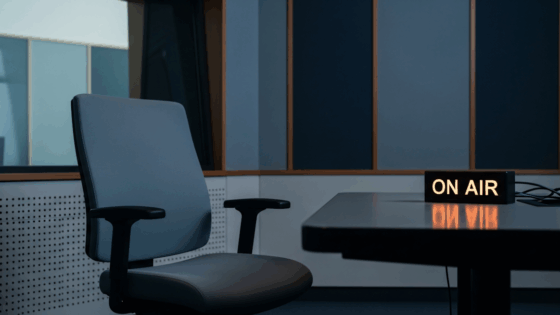on
BY MICHAEL THOMAS
Ontarians are waking up this year to the fact that many things are changing around them, and some of the changes are in the form of new rules and laws.
First up, there is what is called a Rental Renoviction bylaw that goes into effect this year. What is renoviction you might inquire? Renoviction is when a landlord evicts a tenant under the guise of renovating the unit while in reality all he does is rent it out to the highest bidder.
The city is saying that, “The practice has become increasingly common in Toronto’s tight rental housing market and disproportionately impacts low-income and marginalized communities.”
According to the city, to discourage this behavior landlords wishing to play the renovation card will have some vetting hoops to jump over, here is how. As of July 31st, 2025, tenants who received an N-13 (aka renoviction notice) from their landlords should contact the city to verify that their landlord complies with the new bylaw.
Such landlords will require a Rental Renovation License, which must be applied for. Landlords will need to provide approved building permits, provide a copy of the N-13 notice, submit a $700 application fee, notify tenants of a license application, post a tenant information notice in the building, and provide a report prepared by a qualified person noting that the renovation requires vacant possession.
Hold on, this is not done as yet. Landlords will also need to complete a tenant accommodation/compensation plan and provide tenants with prescribed severance compensation if the tenant chooses not to return to the unit.
There also will be zoning bylaw changes for nightclubs. This is said to be aimed at reducing the number of nightclubs in the downtown area. Some rules of the new bylaw go as follows; entertainment establishments must be located in a non-residential building, the only nightclub in the building, and located on the first story or in the basement. Ontarians can be prepared to see new nightclubs at different parts of the province soon, that is if the present economy supports this venture.
If you use the 407 highways, be warned. Ontario’s Highway 407 ETR will be rolling out a new rate schedule that will determine how much you will be charged depending on the vehicle you drive. According to those responsible for this, the new vehicle classifications aim to better reflect each vehicle’s impact, including motorcycles (charged 0.8x of light vehicle rate) and medium-sized vehicles (charged 1.5x of light vehicle rate).
The roll rate for light vehicles will range from three to 14 cents per kilometer, depending on the time of day and zone you travel on the highway. Instead of the highway’s current four zones, there will be 12 zones starting this year, and this will allow the highway operator to set different toll rates for each section.
As if all that I mentioned here was not enough, Ontarians are facing new waste and water fees. In a province that is rapidly turning into an economic ghost town, can someone tell me where the citizens are going to find money for these rate hikes?
A 3.75% increase will take effect on January 1st, 2025. The government’s reasoning is that this hike is needed for continued delivery of services such as waste management and water treatment while also funding ongoing projects.
Here is a breakdown a single-family household will be $306.36 for a small bin (an increase of $11.07), $371.91 for a medium bin (an increase of $13.44), $505.12 for a large bin (an increase of $18.26) and $585.89 for an extra-large bin (an increase of $21.18). An average household facing this 3.75% increase equates to an increase of $39 yearly, for a total annual cost of $1,078 in 2025.
Next up, new building codes come into effect on January 1st, 2025, with a three-month grace period that lasts until March 31st, 2025, for certain designs that are already underway.
Childcare announces starting in January 2025, parent fees will be capped at $22 per day for children under the age of six in CWELCC aka Canada-wide Early Learning and Child Care programs.
Digital Platform Workers Protection starting July 1st, 2025, Ontario’s Digital Platform Workers’ Rights Act will take effect. This covers workers like Uber and DoorDash. Operators must pay at least the ESA-prescribed minimum wage for each work assignment, provide details about how worker pay is calculated, and establish recurring pay.
Immigration is promising some temporary relief all because of public backlash, here are their plans. The 2025-2027 Immigration Levels Plan is expected to result in a population decline of 0.2% in 2025 and 2026, before returning to a population growth of 0.8% in 2027. Compared to 2024’s plan, the federal government will be reducing its plan from 500,000 permanent residents to 395,000 in 2025.
Finally, on the GST and HST tax break food bill, Ontario families spending at least two grand on food per month would see a $100-200 savings and this would end in February 2025. Temporary is the watchword here.
Canada has made no secret of the amount of funds it has sent to places like Ukraine for war purposes, yet, when one analyses all these new price and service hikes and housing issues you would think that this is coming from a broken country.
Stay in the loop with exclusive news, stories, and insights—delivered straight to your inbox. No fluff, just real content that matters. Sign up today!
In his new role as a reporter and Journalist, Michael can he be described in two words: brilliant, and relentless. Michael Thomas aka Redman was born in Grenada, and at an early age realized his love for music. He began his musical journey as a reggae performer with the street DJs and selectors. After he moved to Toronto in 1989, he started singing with the calypso tents, and in 2008, and 2009 he won the People’s Choice Award and the coveted title of Calypso Monarch. He has taken this same passion, and has begun to focus his attention on doing working within the community.













